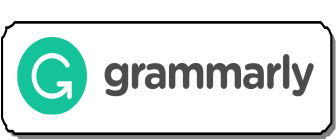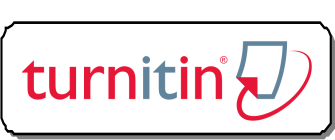The Effect of Service Learning on the Prosocial Behavior of Islamic Boarding School Students
Abstract
This study aims to reveal the effect of service learning on students' prosocial behaviour in boarding schools. A quantitative research approach with a quasi-experimental research design was used in this study. Researchers chose to use a non-equivalent pretest-posttest control group design, which is a design that measures the behaviour of the experimental group and control group before and after treatment. The population in this study were Santri Pondok Pesantren Sabilul Ihsan Pamekasan with the characteristics of boarding students and following the study of Kitab Bidayatul Hidayah. Total sampling was carried out because the population in the study was small, then grouped into experimental groups and control groups. The collected data were analyzed using analysis of covariance (ANOVA) with the SPSS 16 for Windows program. From the analysis that has been done, the results of this study indicate that (1) There are differences in the prosocial behaviour of boarding school students before and after the application of the service learning method in the experimental class. (2) The application of the service learning method is more effective than the bandongan method to improve the students' prosocial behaviour. The results found that service learning had a greater effect on the prosocial behaviour of boarding school students in the experimental group than the students in the control group. The application of service learning conducted in the experimental group was able to increase the prosocial behaviour of students with an effective contribution of 50.1 per cent.
References
Azwar, S. (2011). Metode Penelitian. Yogyakarta: Pustaka Pelajar.
Bartlett, M. Y., & DeSteno, D. (2006). Gratitude and prosocial behaviour. Psychological Science, 17(4), 319-325.
Baron, R. A., & Byrne, D. (2006). Social Psychology. United States of America: Pearson Education, Inc.
Basinger, N. W., & Bartholomew, K. (2006). Service-learning in nonprofit organizations: Motivations, expectations, and outcomes. Michigan Journal of Community Service Learning, 15-26.
Baumeister, R. F., & Vohs, K. D. (Eds.). (2007). Encyclopedia of Social Psychology. United States of America: SAGE Publications, Inc.
Bierhoff, H. W. (2002). Prosocial Behavior. New York: Psychology Press.
Billig, S. H. (2009). It’s Their Serve. America: Leadership of Student Activity.
Billig, S. H., Jesse, D., & Grimley, M. (2008). Using service-learning to promote character education in a large urban district. Journal of Research in Character Education, 6(1), 21.
Browne, M. N., & Keeley, S. M. (2007). Asking the Right Questions: A Guide to Critical Thinking. Pearson Education, Inc.
Brown, M. A., Wymer, J. D., & Cooper, C. S. (2016). The counter-normative effects of service-learning: Fostering attitudes toward social equality through contact and autonomy. Michigan Journal of Community Service Learning, 23(1), 37-44.
Buch, K., & Harden, S. (2011). The impact of a service-learning project on student awareness of homelessness, civic attitudes, and stereotypes toward the homeless. Journal of Higher Education Outreach and Engagement, 15(3), 45.
Burhan, B. (2003). Analisis Data Penelitian Kualitatif. Jakarta: Raja Grafindo.
Campbell, D. T., & Stanley, J. C. (1963). Experimental and Quasi-experimental Designs for Research. Boston: Houghton Mifflin Company.
Christoph, G., Gniewosz, B., & Reinders, H. (2014). How does community service promote prosocial behavior? Examining the role of agency and ideology experience. International Journal of Behavioral Development, 38(6), 499–508.
Cipolle, S. B. (2010). Service-Learning and Social Justice: Engaging Students in Social Change. United States of America: The Rowman & Littlefield Publishing Group, Inc.
Cook, T. D., & Campbell, D. T. (1979). Quasi Experimentation: Design & Analysis Issues for Field Settings. Boston: Houghton Mifflin Company.
Creswell, J. W. (2012). Educational Research: Planning, Conducting, and Evaluating Quantitative and Qualitative Research (4th ed.). Boston: Pearson Education, Inc.
Creswell, J. W., & Clark, V. L. P. (2007). Designing and Conducting Mixed Methods Research. Thousand Oaks, CA: Sage Publications, Inc.
Daulay, H. P. (2007). Sejarah Pertumbuhan dan Pembaruan Pendidikan Islam di Indonesia (2nd ed.). Jakarta: Kencana Prenada Media Group.
Dayakisni, T., & Hudaniah. (2003). Psikologi Sosial (2nd ed.). Malang: UMM Press.
Deeley, S. J. (2015). Critical Perspectives on Service-Learning in Higher Education. New York: Palgrave Macmillan.
Departemen Agama Republik Indonesia. (2003). Pondok Pesantren dan Madrasah Diniyah. Jakarta: Direktorat Jenderal Kelembagaan Agama Islam.
Dofier, Z. (2011). Tradisi Pesantren Studi Tentang Pandangan Hidup Kiai. Jakarta: LP3ES.
Einfeld, A., & Collins, D. (2008). The relationships between service-learning, social justice, multicultural competence, and civic engagement. Journal of College Student Development, 49(2), 95-109.
Einolf, C. J. (2013). Daily spiritual experiences and prosocial behaviour. Social Indicators Research, 110(1), 71–87.
Eisenberg, N., & Mussen, P. H. (1989). The Roots of Prosocial Behavior in Children. United Kingdom: Cambridge University Press.
Eppler, M. A., Ironsmith, M., Dingle, S., & Errickson, S. (2011). Benefits of service-learning for freshmen college students and elementary school children. Journal of the Scholarship of Teaching and Learning, 11(4), 102–115.
Eyler, J., Giles, D. E., Stenson, C. M., & Gray, C. J. (2001). At a Glance: What We Know about the Effects of Service-Learning on College Students, Faculty, Institutions and Communities, 1993-2000 (3rd ed.). Retrieved from http://servicelearning.org/filemanager/download/aag.pdf
Eyler, J. (1996). Reflection: Linking service and learning-linking student and communities. Retrieved from http://www.servicelearning.msstate.edu
Faturochman. (2006). Pengantar Psikologi Sosial. Yogyakarta: Pustaka Book Publishing.
Fung, A. L. (2008). Developing prosocial behaviors in early adolescence with reactive aggression. International Journal of Progressive Education, 4(3), 28-37.
Furco, A. (2011). Securing student success through service-learning. Retrieved from http://ccncce.org/wp-content/uploads/2014/06/FurcoKeynote.pdf
Gerungan, W. A. (2000). Psikologi Sosial. Bandung: Refika Aditama.
Ghazali, M. B. (2001). Pendidikan Pesantren Berwawasan Lingkungan: Kasus Pondok Pesantren An-Nuqayah Guluk-Guluk Sumenep, Madura (1st ed.). Jakarta: Pedoman Ilmu.
Ghofur, A. (2007). Etika Santri dalam Masyarakat. Semarang: IAIN Walisongo.
Haedari, A., et al. (2004). Masa Depan Pesantren dalam Tantangan Modernitas dan Tantangan Kompleksitas Global (1st ed.). Jakarta: IRD Press.
Hanurawan, F. (2010). Psikologi Sosial: Suatu Pengantar. Bandung: PT Remaja Rosdakarya.
Hou, S. I. (2010). Developing a faculty inventory measuring perceived service-learning benefits and barriers. Michigan Journal of Community Service Learning, 16(2), 78-89.
Holsapple, M. (2012). Service-learning and student diversity outcomes: Existing evidence and directions for future research. Michigan Journal of Community Service Learning, 18(2), 5-18.
Jenkins, A. (2009). Implementing service learning in special education coursework: What we learned. Education, 129(4).
Kambau, R. A., Mustafa, M., Iftitah, M., & Siraj, A. (2014). Pengantar Service Learning Universitas Islam Negeri Alauddin Makassar. Makassar.
Kennedy, M. G. (2013). The relationship between prosocial music and helping behaviour and its mediators: An Irish college sample. Journal of European Psychology Students, 4(1), 1-15.
Kitzrow, M. A., & Whitehead III, G. I. (2010). A Glorious Revolution for Youth and Communities: Service-Learning and Model Communities. United Kingdom: Rowman & Littlefield Publishers, Inc.
Kuntjojo, & Matulessy, A. (2012). Hubungan antara metakognisi dan motivasi berprestasi dengan kreativitas. Persona Jurnal Psikologi, 1(01).
Kusdwiratri, S. (2009). Psikologi Perkembangan: Kajian Teori Piaget, Selman, Kohlberg, dan Aplikasi Riset (2nd ed.). Bandung: Widya Padjadjaran.
K-12 Service-Learning Project Planning Toolkit. (2009). United States of America. Retrieved from http://www.servicelearning.org
K–12 Service-Learning Standards for Quality Practice. (2008). National Youth Leadership Council. Retrieved from http://www.nylc.org
Malik, J. (2005). Pemberdayaan Pesantren: Upaya Mengatasi Problematika Sosial dan Uplifting Masyarakat Pinggiran (1st ed.). Jakarta: Cendekia Press.
Mangunwijaya, A. S. (2003). Wajah Tuhan yang Tersembunyi. Jakarta: PT Gramedia Pustaka Utama.
Meriyati, & Hanum, L. (2011). Psikologi Perkembangan: Kesehatan Mental Anak dan Remaja. Bandung: Widya Padjadjaran.
Myers, D. G. (2008). Social Psychology (9th ed.). New York: McGraw-Hill.
Mills, C., & Boardley, D. (2008). Services-Learning: The Way to Make School Reform Happen. United States of America: Rowman & Littlefield Education.
Northouse, P. G. (2013). Leadership: Theory and Practice (6th ed.). United States of America: SAGE Publications.
Olson, M. H., & Hergenhahn, B. R. (2013). An Introduction to Theories of Learning (9th ed.). New York: Pearson Education, Inc.
Paludi, M. A. (2002). Human Development in Multicultural Contexts: A Book of Readings. United States of America: Prentice Hall.
Patton, M. Q. (1990). Qualitative Evaluation and Research Methods (2nd ed.). United States of America: SAGE Publications.
Patton, M. Q. (2002). Qualitative Research and Evaluation Methods (3rd ed.). United States of America: SAGE Publications.
Phillips, D. C., & Burbules, N. C. (2000). Postpositivism and Educational Research. Lanham, MD: Rowman & Littlefield.
Pinem, A. A. (2004). Pelayanan Kepada Mahasiswa dalam Organisasi Kemahasiswaan. Bandung: CV Maulana Press.
Copyright (c) 2024 Zamzami Sabiq, Fattah Hanurawan, Imanuel Hitipeuw

This work is licensed under a Creative Commons Attribution-ShareAlike 4.0 International License.
Please find the rights and licenses in SYAMIL Jurnal Pendidikan Agama Islam (Journal of Islamic Education). By submitting the article/manuscript of the article, the author(s) agree with this policy. No specific document sign-off is required.
1. License
The non-commercial use of the article will be governed by the Creative Commons Attribution license as currently displayed on Creative Commons Attribution-ShareAlike 4.0 International License.
2. Author(s)' Warranties
The author warrants that the article is original, written by stated author(s), has not been published before, contains no unlawful statements, does not infringe the rights of others, is subject to copyright that is vested exclusively in the author and free of any third party rights, and that any necessary written permissions to quote from other sources have been obtained by the author(s).
3. User/Public Rights
SYAMIL spirit is to disseminate articles published are as free as possible. Under the Creative Commons license, SYAMIL permits users to copy, distribute, display, and perform the work for non-commercial purposes only. Users will also need to attribute authors and Register on distributing works in the journal and other media of publications. Unless otherwise stated, the authors are public entities as soon as their articles got published.
4. Rights of Authors
Authors retain all their rights to the published works, such as (but not limited to) the following rights;
Copyright and other proprietary rights relating to the article, such as patent rights,
The right to use the substance of the article in own future works, including lectures and books,
The right to reproduce the article for own purposes,
The right to self-archive the article (please read out deposit policy),
The right to enter into separate, additional contractual arrangements for the non-exclusive distribution of the article's published version (e.g., post it to an institutional repository or publish it in a book), with an acknowledgment of its initial publication in this journal (SYAMIL Jurnal Pendidikan Agama Islam (Journal of Islamic Education)).
5. Co-Authorship
If the article was jointly prepared by more than one author, any authors submitting the manuscript warrants that he/she has been authorized by all co-authors to be agreed on this copyright and license notice (agreement) on their behalf, and agrees to inform his/her co-authors of the terms of this policy. SYAMIL will not be held liable for anything that may arise due to the author(s) internal dispute. SYAMIL will only communicate with the corresponding author.
6. Royalties
Being an open accessed journal and disseminating articles for free under the Creative Commons license term mentioned, author(s) aware that SYAMIL entitles the author(s) to no royalties or other fees.
7. Miscellaneous
SYAMIL will publish the article (or have it published) in the journal if the article’s editorial process is successfully completed. SYAMIL editors may modify the article to a style of punctuation, spelling, capitalization, referencing and usage that deems appropriate. The author acknowledges that the article may be published so that it will be publicly accessible and such access will be free of charge for the readers as mentioned in point 3.












